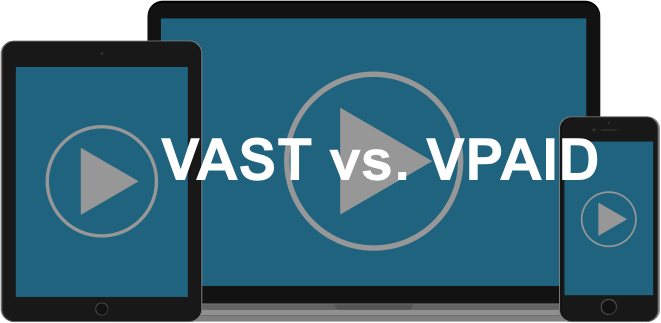
Ullekh Tandon
0 Comments
Difference between VPAID and VAST
VPAID (Video Player-Ad Interface Definition) and VAST (Video Ad Serving Template) are both standards developed by the Interactive Advertising Bureau (IAB) for the digital advertising industry. They play key roles in video ad serving, but they serve different purposes.
VAST (Video Ad Serving Template):
Purpose:
- Description: VAST is a standard for serving and tracking video advertisements. It provides a template that defines how video ads should be served and how tracking events should be communicated between ad servers and video players.
- Functionality: VAST primarily focuses on delivering video ad creatives (like MP4 files) to video players and specifying how the player should handle the ad (e.g., display, skip, or pause).
Technical Aspects:
- XML Format: VAST tags are XML documents that contain information about the ad, such as the ad creative file location, duration, tracking URLs, and more.
- Tracking Events: VAST supports tracking events like impressions, quartile tracking (tracking at different points of the video), and click-through tracking.
- Linear and Non-Linear Ads: VAST supports both linear (pre-roll, mid-roll, post-roll) and non-linear (overlay ads) video ads.
VPAID (Video Player-Ad Interface Definition):
Purpose:
- Description: VPAID is an interface that enables a rich interaction between video ads and video players. It allows for interactive and dynamic ad experiences within the video player.
- Functionality: VPAID enables ad units to be interactive and may allow features like games, forms, or other dynamic elements within the ad unit.
Technical Aspects:
- API Interface: VPAID provides a JavaScript API that allows the video player to communicate with the ad unit. This enables interactivity and dynamic content.
- Rich Media: VPAID supports rich media experiences within video ads, allowing advertisers to create more engaging and interactive content.
- Dynamic Ad Insertion: VPAID can dynamically change the ad creative during playback, providing a more dynamic and personalized ad experience.
Technical Differences:
Interactivity:
- VAST: Primarily focused on delivering video content. Limited support for interactivity.
- VPAID: Designed to enable interactive and dynamic ad experiences within the video player.
Format:
- VAST: XML-based template specifying how video ads should be served and tracked.
- VPAID: Provides a JavaScript API for communication between the video player and the ad unit.
Use Cases:
- VAST: Suitable for delivering linear and non-linear video ads with basic tracking.
- VPAID: Ideal for interactive and dynamic video ad experiences with more advanced tracking capabilities.
In summary, VAST is primarily concerned with the delivery and tracking of video ads, while VPAID focuses on enabling interactive and dynamic experiences within the video player. In some cases, both VAST and VPAID may be used together, with VAST handling the basic video delivery and tracking, and VPAID providing additional interactivity.
204 Enrolled
Certification Program in Programmatic Advertising
8 week
31 Lessons
₹35,000.00₹25,000.00




